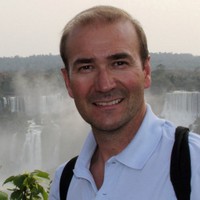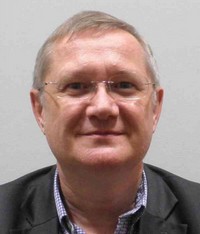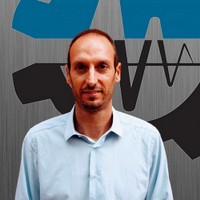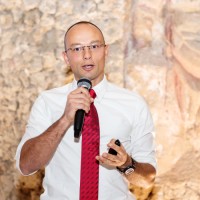Program
Home / Program
VENUE
Venue: Ferrara, IUSS Turchi di Bagno, Corso Ercole I d'Este, 32 (near Palazzo Dei Diamanti)
The AIAS Ph.D. summer school is held at IUSS - Ferrara 1392. IUSS - Ferrara 1391, is a structure that offers university courses at the undergraduate and graduate level with the highest qualification. It is a center of studies open to italian and international students. From January 2009 IUSS-Ferrara 1391 hosts the Giorgio Bassani Foundation with the aim of promoting the collection, protection, conservation, management and development of documents, as well as the promotion of studies and cultural activities regarding the multiform activities and various interests of the famous writer. Fundamental characteristics of IUSS - Ferrara 1391 are to make the most of talent using only the highest criteria for the selection of students, an international character based on the involvement of international scholars and students, the opportunity to reside in Ferrara with the creation of a Residential College that is a point of reference for the most deserving Italian and international students, besides being tools of cultural mixing. Each year IUSS-Ferrara 1391 invites as Copernicus Visiting Scientists Italian scholars resident abroad and international scholars to stay in Ferrara for at least two months, with the aim of achieving excellent teaching standards at an international level.
PROGRAM
LECTURE ABSTRACTS
 | Engineering Fracture Mechanics and beyond: modelling fracture, damage and effects Prof. Nicola Bonora University of Cassino and Southern Lazio, Cassino, Italy The strength of materials in the presence of defects, better known as Fracture Mechanics, is a relatively recent science whose essential concepts were developed over a very short period and, almost immediately, became part of engineering practice. The lecture is organized in two parts: first, the essential concepts of the design-against-fracture from a historical perspective are presented, and successively, the most recent modeling developments, considering the different micromechanisms responsible for fracture in metals and alloys, are presented. Finally, several application examples are shown. | ||
 | Climate-induced risk and damage in heritage objects based on damage functions and machine-learning-aided criteria Prof. Chiara Bertolin NTNU,Trondheim Norway The lecture aims to provide an introductory overview of which are nowadays the typical applications of machine learning (ML) algorithms in heritage field to enhance the damage detection and predictive maintenance and preservation capabilities. It introduces what are the threats induced by climate change and/or by artificial climate control strategies on historic materials and structures. It progresses illustrating some of the damage functions usually adopted to evaluate climate-induced risks on materials and finally, it provides an overview of what are the novel data-driven approaches focused on the use of machine learning (ML) algorithms. ML algorithms can be used for several applications for example, for predicting the compressive strength of masonry or repair mortars, for highlighting possible damage scenarios in historical buildings caused by natural hazards, for determining the mechanical properties of materials, and superficial damages on monuments caused by weathering as a synergistic effect of mechanical, chemical, and biological decay. Finally, ML can be used as a reliable method to reconstruct corrupted and missing monitored data collected indoors in historical buildings, churches, and museums or to predict whether climatic fluctuations may have catastrophic effects on hygroscopic materials in terms of hygro-mechanical stress development. | ||
 | Design, modelling and fracture mechanics of lithium ion battery Prof. Aurelio Somà and Dr. Davide Clerici Politecnico di Torino | ||
 | Numerical simualtion of Fatigue Crack Growth Prof. Emeritus Aleksandar Sedmak, University of Belgrade, President of ESIS Introduction, theoretical overview, including advantages of numerical modelling of fatigue crack growth in linear elastic materials under given cyclic loading. The approach involves accurate evaluation of stress intensity factors (SIFs), path of crack growth predictions and a fatigue life evaluation through an incremental crack extension analysis, using the Paris law. The xFEM implemented in Abaqus and classical FEM implemented in ANSYS Workbench have been used to solve several Fatigue crack growth problems, such as integral vs. differential wing spars, stringer AA2024 panels, turbine shafts, oil rig pipes, multiple fatgue cracks, CT specimen, orthopedic plates, hip implants, welded joints. | ||
  | Advanced bioinspired and data-driven design methods against fracture and fatigue Prof. Filippo Berto Università La Sapienza Roma and Prof. Chao Gao NTNU,Trondheim Norway Generally, fracture is considered detrimental to the mechanical performance of materials and has received interests from scientists and engineers for centuries. Traditional chemistry-based method and micromechanics-based method have extensively been studied to enhance fracture resistance of materials, and both methods have difficulties to tackle current industrial challenges. Recently, bioinspired design method and machine-learning-based method have been advocated as promising methods against fracture. In this lecture, these two innovative design methods will be presented. The first part of this lecture will introduce strategies inspired by seedcoat in Nature, and the second part of this lecture will focus on how ML-based method goes beyond human’s engineering intuition on the design of lattice materials. | ||
 | Vibration-based diagnostics and prognostics: theory and applications Prof. Emiliano Mucchi Università di FerraraThe scope of the lecture is to introduce the main methods for vibration-based diagnostics and prognostics. In particular, the following topic will be covered:
| ||
 | Fracture mechanics in machine design and qualification: an industrial perspective Dr. Ing. Matteo Cova Sacmi (Imola) Based on the experience and the research activities in the context of fatigue of large structures, examples and applications will be given in the following topics: 1. Failure analysis and the challenge of data uncertainty 2. Computational fracture mechanics using Ansys Workbench 3. Design criteria using the Kitagawa-Takahashi diagram 4. Qualification of large castings based on damage tolerance and extreme value statistics” | ||
